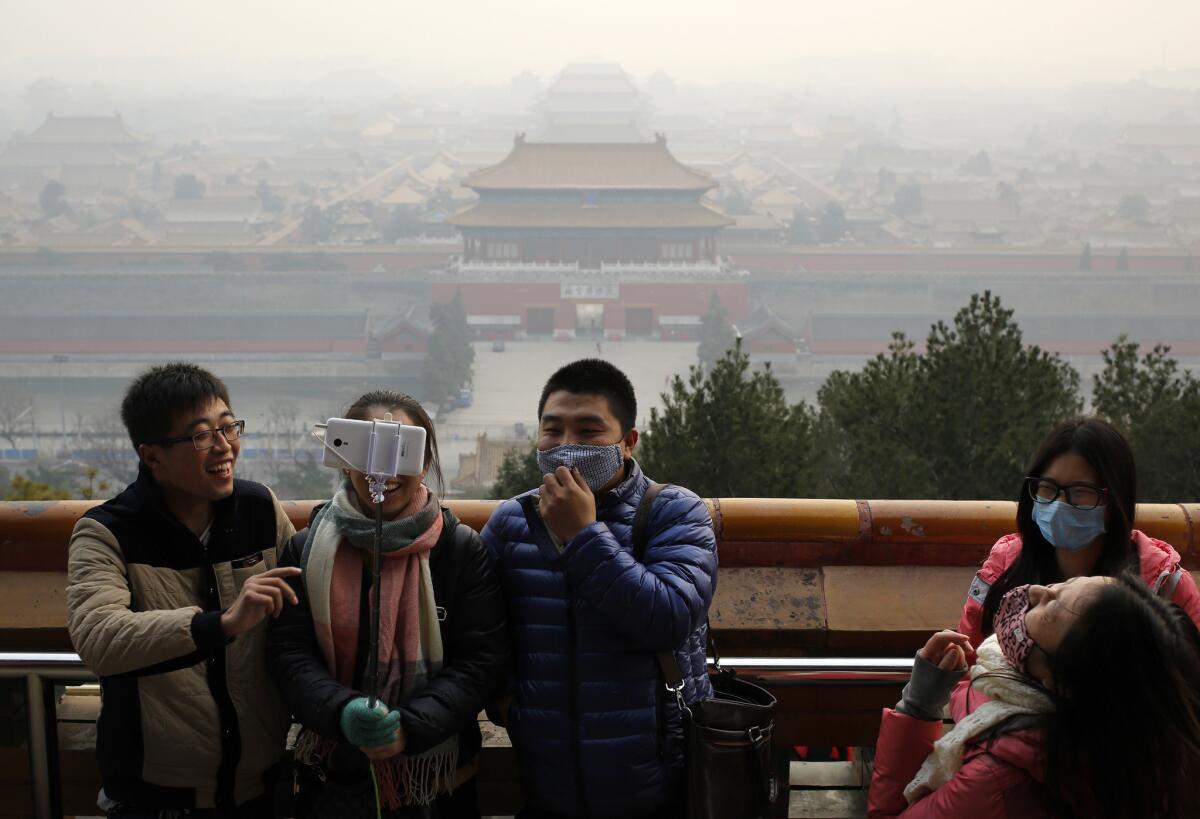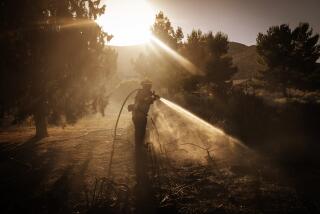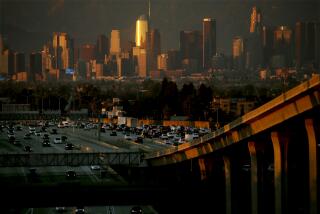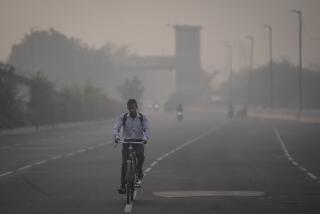Beijing issues first-ever ‘red alert’ for smog

Visitors, some wearing masks to protect themselves from pollutants, take a selfie at Jingshan Park in smoggy Beijing on Dec. 7.
Reporting from Beijing — Beijing has issued its first-ever “red alert” for smog amid the second intense bout of bad air this month. Officials announced plans to close schools, temporarily shutter factories and take half of the city’s cars off the roads.
The measures will go into effect on Tuesday at 7 a.m. and last until noon on Thursday, when meteorologists predict a cold front will move the smog away.
The alert, which Beijing’s Office of Emergency Management announced at 6 p.m. Monday, comes after a five-day stretch of air pollution last week reduced visibility in some areas to less than 300 feet and delayed flights at the city’s main international airport. According to the Beijing News, several expressways leading into the city were shut down and some long-distance bus services were also suspended.
During last week’s “orange alert” -- the first of the year, and the second-most-serious warning on a four-tier system -- Beijing education authorities ordered all schools to halt outdoor classes and activities, and allowed schools to “flexibly arrange” their academic schedules. Last Tuesday, at least one school, Beijing No. 2 Experimental Primary School, suspended classes and allowed students to stay home.
Yet those moves stopped short of those put in place under this week’s alert, which urges schools throughout the city to close completely; restricts cars, based on even and odd license plate numbers, to driving on alternating days; and temporarily closes many of the city’s factories, construction sites and even outdoor barbecues.
The measures have caused confusion among commuters, who fear that the alert will wreak havoc on Beijing’s already-packed buses and subways, and parents, who wonder how they’ll look after their children until schools reopen.
“We were just informed the primary school will be shut for three days,” said Li Xia, 35, an employee at an insurance company with an 8-year-old daughter. “There isn’t such a thing as a pollution holiday for us. So I don’t know how this will work -- what are we going to do with our children while we’re working?”
“The pollution has been so bad these past few years,” she continued. “My child will have to stay at home this whole time. When I was a kid, I used to play outdoors with my friends all the time. I feel sorry for my child; this is not the way a kid should live.”
By 8 p.m. Monday, the air quality index -- a widely used measure of air pollution -- for Beijing rested at about 250 on a scale of 0 to 500. The World Health Organization classifies readings of over 300 as “hazardous.”
At 9:15 p.m., teacher Li Jing was still waiting to hear whether schools in her Beijing district would be in session tomorrow. “It’s very strange,” said Li, who has a 10-year-old son. “All the other districts have issued notices and we are still waiting.”
Dong Liansai, a Beijing-based climate and energy campaigner at Greenpeace, said the red alert was released in a timely manner and was consistent with the city’s emergency response plan.
“That’s a sign of a different attitude from the Beijing government,” he said. “It shows they really want to initiate this alert system and deal with air pollution.”
He called the current episode “a crisis that’s also a chance to test and improve the emergency response plan.” Still, he said, having two nearly back-to-back episodes of intense pollution “means China still needs to do more to realize the urgency of curbing air pollution” and should use the events to add to momentum for policy change and greater enforcement of existing regulations.
Ma Jun, director at the Beijing-based Institute of Public and Environmental Affairs and one of China’s best-known environmental activists, praised the move, saying there had been “a lot of questions” following the intense smog of last week and prior occasions when the criteria for a red alert had been met but authorities had nevertheless only issued an orange warning.
“This will prevent the most vulnerable group [children] from further exposure ...,” he said.
Still, he said, “we need to realize that pollution is a regional problem and it’s not just about our own city [Beijing] and whatever emergency actions we can take. Whatever we do can only have limited results.”
“In the future, we need to work out how to coordinate a regional response because emissions from industry and coal burning [in nearby regions] are much more significant than emissions from cars,” he said.
Ma noted that Beijing is in the same “airshed” as heavily industrial areas nearby, including Hebei province.
“We need to work in coordination,” he said. “The coal and industrial pollution is much worse” than from cars. “In many places, the quality of coal is still quite bad.”
Ma said he believes that the red alert in Beijing will prompt a deeper public discussion about how to clear the skies.
“The question is, how can we control pollution based on rule of law, not just in emergency cases like this, taking tough action,” he said. “We need to make sure day-to-day enforcement happens.”
Nicole Liu and Yingzhi Yang in the Times’ Beijing bureau contributed to this report.
Follow @JulieMakLAT and @JRKaiman on Twitter for news out of China.
ALSO
San Bernardino assailant attended Islamic institute in Pakistan
‘We are stronger than they are’: First Paris cafe reopens after terrorist attack
Somber President Maduro acknowledges ‘adverse’ results in Venezuelan vote
More to Read
Sign up for Essential California
The most important California stories and recommendations in your inbox every morning.
You may occasionally receive promotional content from the Los Angeles Times.











